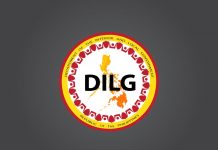To cater to the needs of drug surrenderers in need of treatment and rehabilitation, the Department of the Interior and Local Government (DILG) has issued the guidelines for the implementation of community-based drug rehabilitation program (CBDRP) at the local level.
DILG OIC-Secretary Eduardo M. Año says the CBDRP can address the gap between the ballooning number of drug users and surrenderers brought about by the government’s intensified anti-drug operations and the capacity of treatment facilities in the country.
“There is no stopping our government in eradicating illegal drugs in the country. In doing so, the goal is also to rehabilitate drug users for reintegration. CBDRP gives us greater chance of reaching more drug users and easing our bigger drug rehab centers of congestion,” Año explains.
He says the CBDRP will not only diffuse the number of drug rehab patients away from drug treatment centers, but will also allow faster and greater chances of healing and rehabilitation for drug users because sessions are done within the community close to their nurturing families.
“I believe that healing will be faster for the drug users if they are close to their families who can show their love and support during the entire rehabilitation process,” he says.
The DILG Chief clarifies, however, that CBDRP will only treat those who are suffering from drug use and drug abuse, both of which fall as low and mild substance use, not for those who are diagnosed as drug dependents.
How the CBDRP works
In Memorandum Circular 2018-125, Año says that in implementing CBDRP, substance users will first have to go through an orientation activity to reinforce positive change and explain the consequences of one’s behavior. Afterwhich, there shall be a Drug Dependency Examination which shall be conducted by a Department of Health physician who shall determine the appropriate diagnosis and recommendation whether the user shall be referred to a residential treatment facility, for CBDRP, in a psychiatric facility, or a general hospital.
If the patient is recommended to undergo CBDRP, the patient will undergo rehabilitation for a minimum of six months, shall complete 24 counselling sessions, and undergo unannounced drug testing. At the same time, he or she will be provided with the following: clinical services to be conducted by allied health care personnel; psycho-spiritual services by a faith-based group; and sustainability programs services from other government organizations.
Clinical Services focus on the physiological and psychological aspect of the individual such as Individual Treatment Plan by a Department of Health (DOH)-accredited physician, medical services and counseling sessions, among others.
Psycho-spiritual Services focus on the spirituality and values and spiritual formation, and guidance, while Sustainability Program Services tackle the social aspect with services such as skills development, livelihood education and educational support.
“These services must be present in an LGU so that they may be able to carry out the provisions of the guidelines of the CBDRP. Without these, it will be hard for them to implement the full coverage of the program,” Año says.
For the CBDRP to work and be sustained, he says Anti-Drug Abuse Councils (ADACs) will be essential as they are expected to be a partner in carrying out CBDRP in LGUs being the main arm of the government against illegal drugs in the grassroots level.
He says that LGUs should ensure that ADACs within their jurisdiction are strengthened, functioning and provided with logistical support.
CBDRP follows the Guidance Document for Community-based Treatment and Care Services for People Affected by Drug Used and Dependence by the United Nations Office on Drugs and Crime in partnership with DOH. –R4A/DILGCO



